
Teaching and learning resources for the construction industry with NVQ and Diploma Assessment Criteria
Bricks can be laid in a variety of ways to achieve strength and decoration in walling.
If bricks are laid one upon another with vertical joints in line any movement of the wall will cause it to crack along that vertical joint.
In addition, any load placed upon a top brick will only be passed straight down to the bricks in line below.
However, if bricks are staggered so that one brick rests on the two below the threat of cracking is diminished and the load is transferred throughout the brickwork thereby increasing the strength of the wall.
This is called bonding the brickwork, see example below:
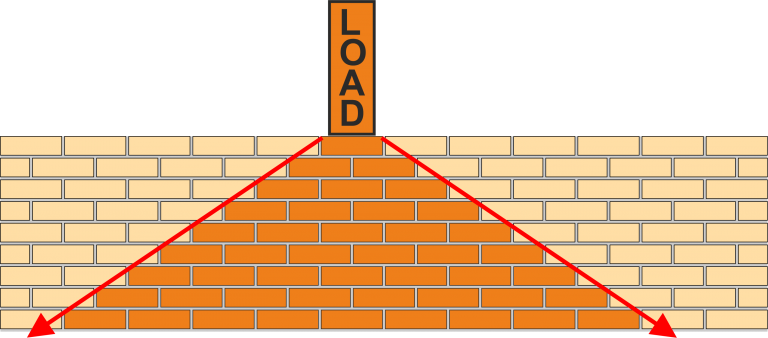
Bonding Load
To ensure that any loads are distributed evenly.
To make sure that it is able to resist sideways or lateral pressure.
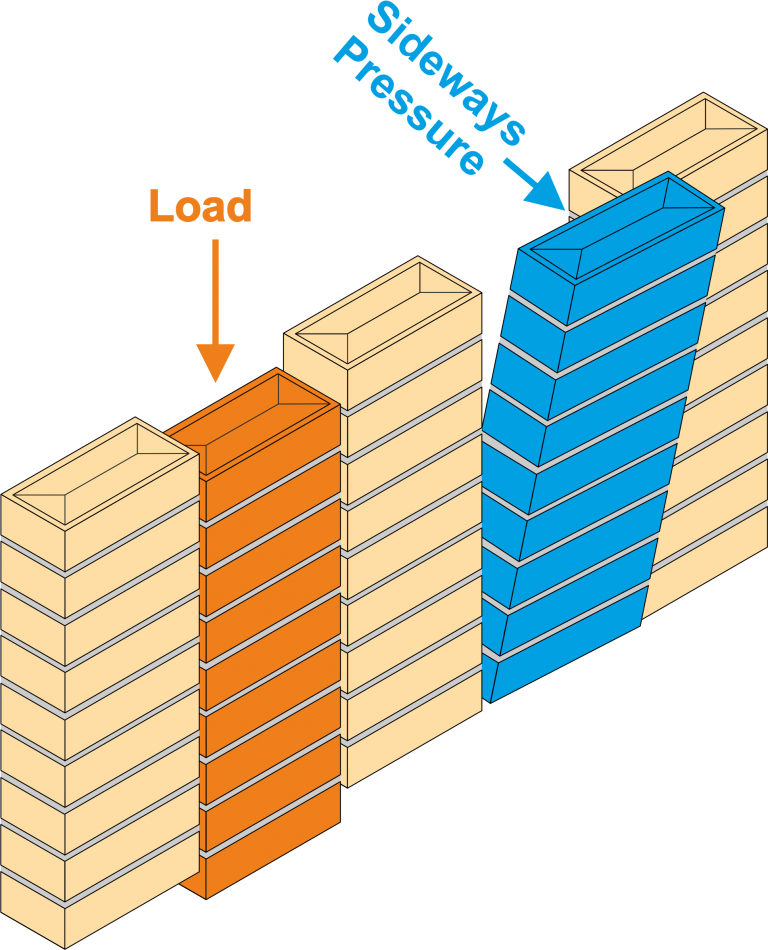
Bonding Load
Bonding of brickwork is the arrangement of the bricks in a definite pattern to give a pleasing appearance and still maintain adequate strength for the job to be done.
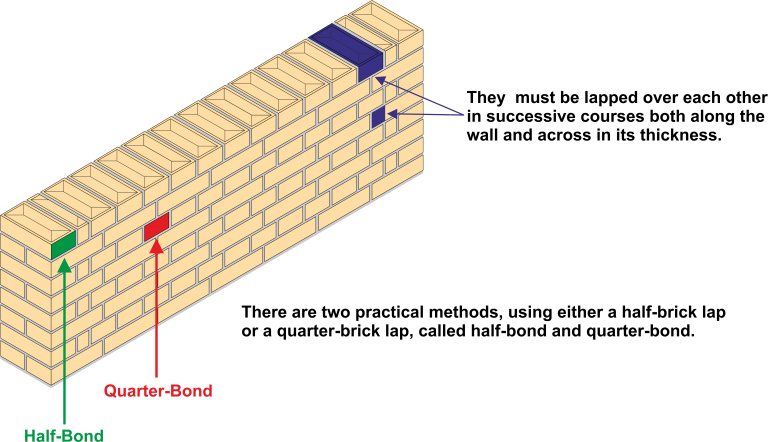
Lapped Bonding
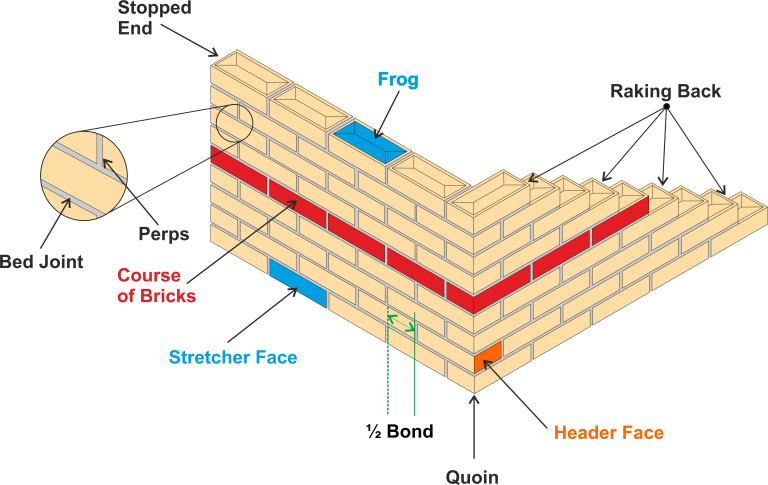
Parts of a Wall
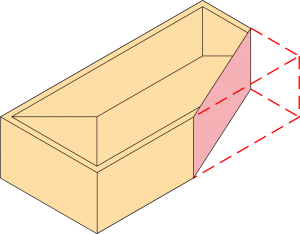
King Closer
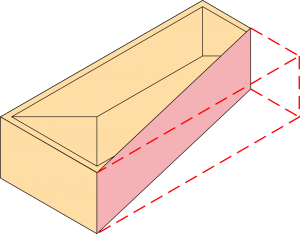
Bevelled Closer
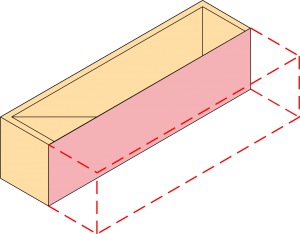
Queen Closer
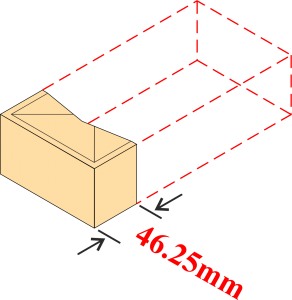
¼ Bat
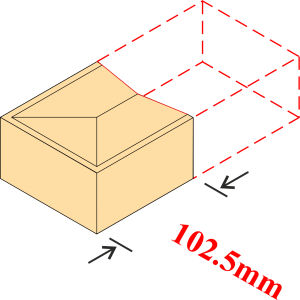
½ Bat
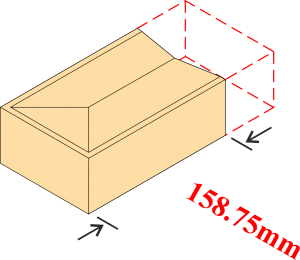
¾ Bat
The illustration show below is in stretcher bond because all the bricks are laid header to header and the stretcher side of the brick is what is seen.
A brick is twice as long as it is wide.
A “one brick” wall from front to back is the length of one brick.
The Illustration shows a “half brick” wall.
A half brick wall is used for internal walls of and for the external wall of cavity walls.
The inner walls of a cavity wall can be brick or block and the two walls linked with galvanised wall ties.
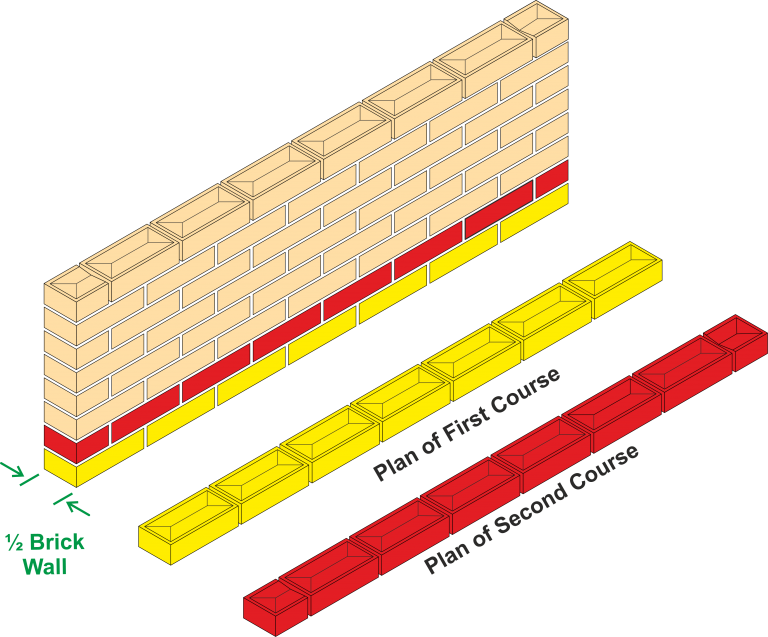
Stretcher Bond
The face bond consists of all stretchers, except at the return angles and stopped end.
Half bond must be maintained at all times.
Two methods of bonding a one brick thick wall that can be seen in all parts of the UK are:
English bond
Flemish bond
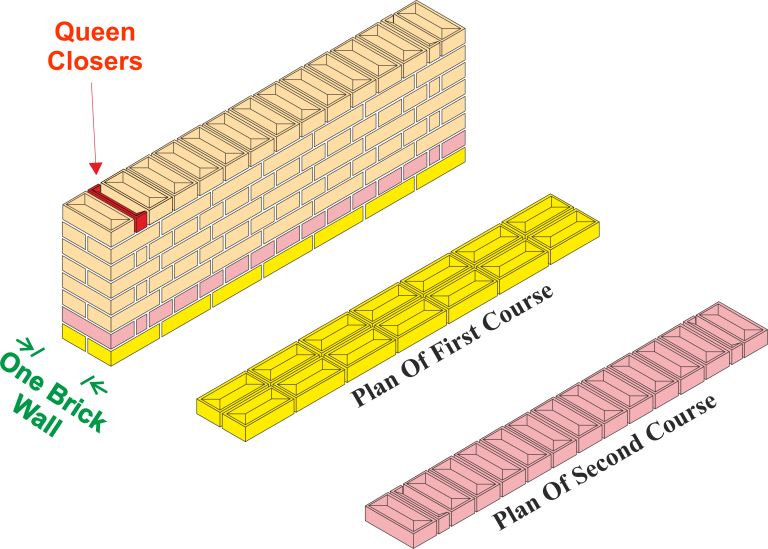
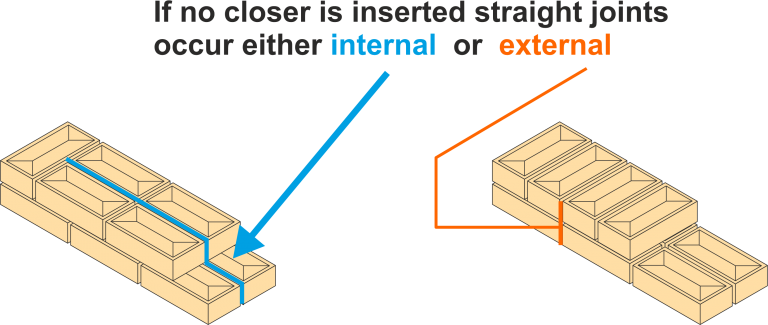
English Bond
Alternate courses of headers and stretchers.
A very strong bond, with no straight joints occurring in any part of the wall.
It is used in a walls where strength is preferable to appearance.
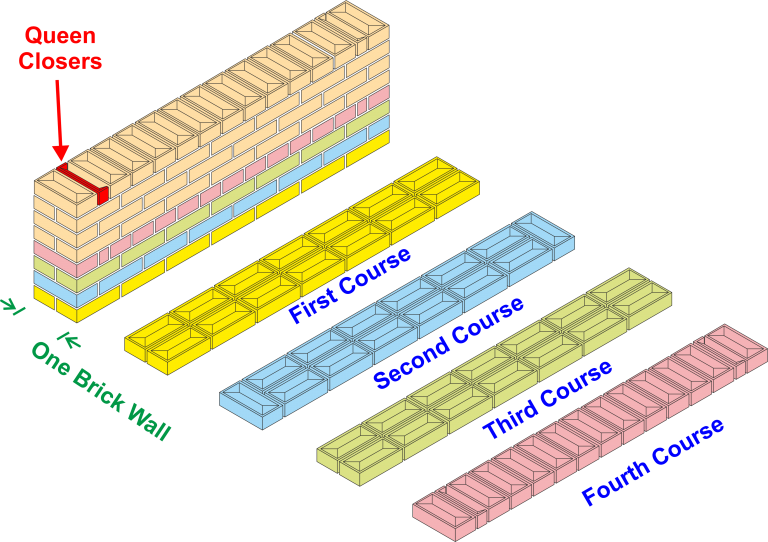
English Garden Wall Bond
Consists of three courses of stretchers to one of headers.
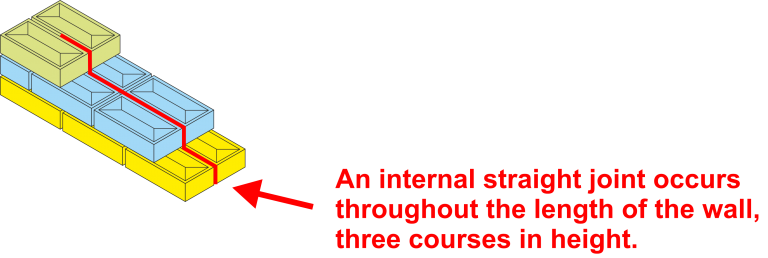
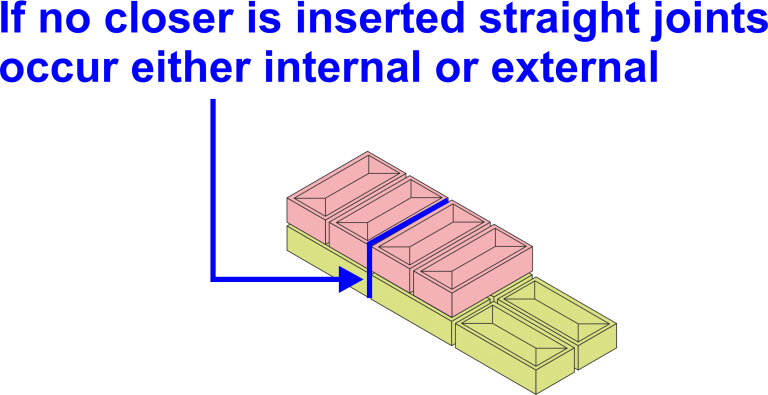
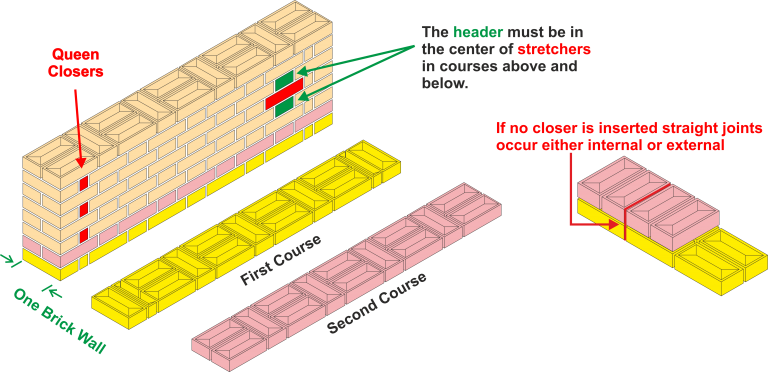
Flemish Bond
Flemish bond is more common and each row comprises of alternate headers and stretchers.
At quoins or perpendicular ends of walls both methods require a cut brick called a “queen closer” to complete the bond.
This is half the width of the header and is cut the full length of the brick.
Bats may also have to be cut to adjust to the length of the wall in some cases.
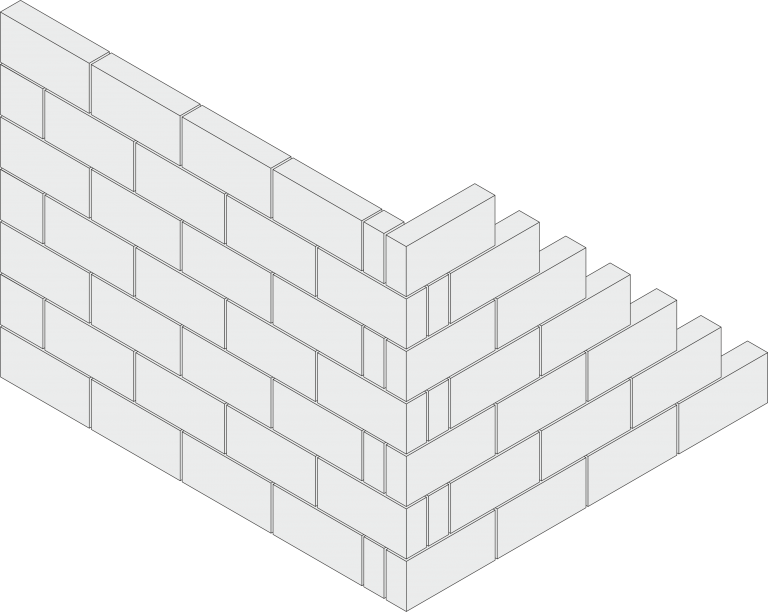
Bonding Blockwork
The same principles of bonding apply to block walls.
They too require cut blocks to complete the bond.
Closers will vary in width depending on the thickness of the blocks being used.
Half blocks are cut to form perpendicular, straight ends to the blockwork.